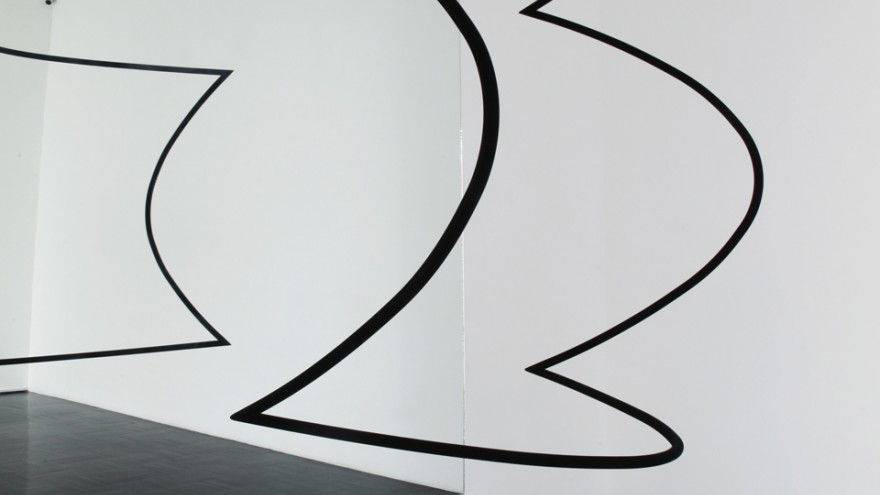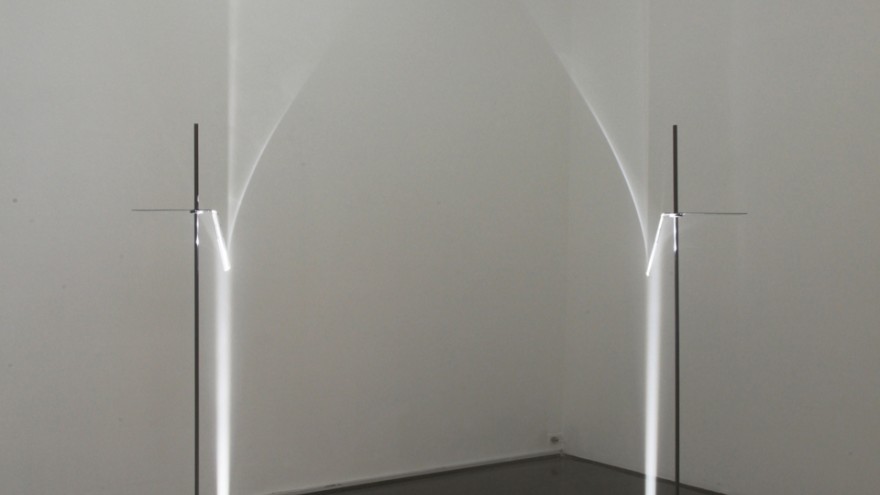Using drawings, paintings, installations and sculptures, Troika reflects on the fundamental tension between perception and reality in their latest exhibition held in Mexico.
The design trio use their investigative natures to explore how fact and purpose, subject and object, and culture and nature underline the paradoxes of human existence. The exhibition titled The Far Side of Reason brings together existing works by the designers as well as new works that try to explain the unexplainable.
“Squaring the Circle” is a design that evolved from philosophical and empirical debates. Constructed from steel and wrapped in dense black flock flannel that absorbs light, the creation is simple yet intriguing. The materials used are a symbolic representation of how a two-dimensional cannot recognise or conceive a three-dimensional object and therefore challenge the visual sensibility of the viewer.
“Path of Least Resistance” is an array of paper that has patterns burned into it as a result of a 50 000 electric volt discharge. The creation visually evokes rivers, blood vessels, veins and plant roots, all of which stem from the same natural genetic law. The aim of “Path of Least Resistance” is to show viewers the defiant playfulness present in nature through patterns.
Attempting to create a tangible entity, which reveals a synergy between logic and the metaphysical, “Hierophany” is a series of framed sculptural drawings constructed with 1000 black and white dice. Each die is placed in an order of pre-determined rules allowing unpredictable patterns to emerge. “Hierophany” seeks to highlight the randomness between chaos and order.
Questioning and challenging a relationship between the metaphysical in a world governed by practical, rational and scientific principles, “Suspension of Disbelief” uses a light bulb to undermine expectations. A pillar of light is met by a Fresnel lens, which refracts the light into an arch instead of changing the direction of the light, as one would expect. Through confronting the viewer with the impossible phenomenon of bending light, the installation creates a space for contemplation and introspection.
Taking inspiration from English poet John Keats’ belief that science had robbed nature of its rainbow spectacle by reducing it to a notion of prismatic colours, “Falling Light” reveals the interplay between crystal prisms and the pre-natural experience they are able to create. Using Swarovski crystals embedded into mechanical devices suspended from the ceiling, a computer generates light patterns and colours.
In an age where computers allow the retracing and erasing of almost everything, Troika’s “Black Dust” series uses soot to eliminate this possibility. Soot particles are scattered over white paper to reveal gradations from light to dark. The layering of the surface is three-dimensional in density but light and airy at the same time.
Drawing on the notion of the Big Bang, Troika’s “Small Bangs” is symbolic of the fact that all matter was once created from darkness. Similar to “Squaring the Circle”, the series uses black ink on chromatography paper to shape and spread patterns in an uncontrolled manner. The artworks are not what they seem as various colours are used to make up the absolute black ink.
The Far Side of Reason is on display at OMR Gallery in Mexico City, Mexico until 16 June 2013.


























